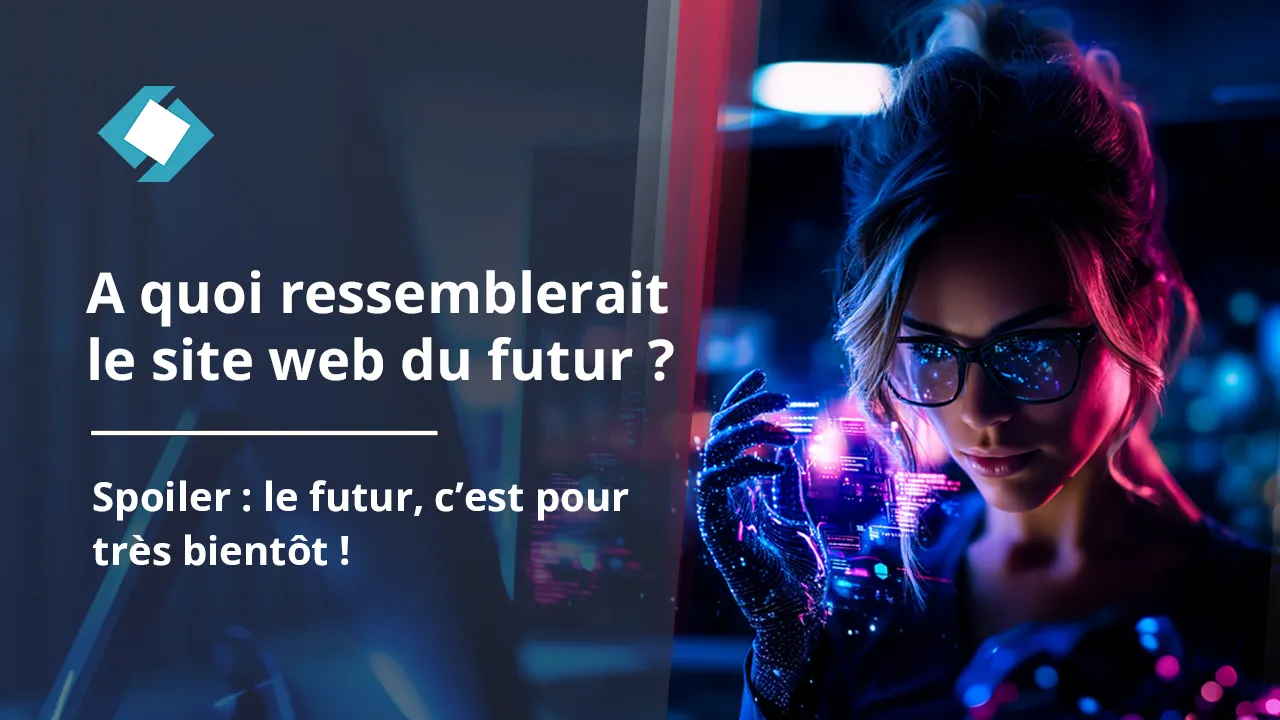37 million websites created every year… if we placed them end to end, that would be equivalent to 2,300 Eiffel Towers of stacked HTML code. But in 6 months, 90% of them will already be obsolete. Why?
Because a silent revolution is underway. Two technologies that nobody sees coming will radically transform web experience: the Mutation Observer API coupled with AI conversational agents. And frankly, after 15 years of creating websites, I’ve never seen such a powerful disruption approaching.
I’m telling you right now: if your website doesn’t automatically adapt to your visitors’ intentions by the end of 2026, you’ll already be 3 years behind.
The Mutation Observer API: The invisible technology that changes everything
Mutation Observer? For the uninitiated, it’s a JavaScript API that monitors DOM modifications in real-time (the DOM, in simple terms, is your page’s source code). It replaces old polling techniques (making multiple spaced requests over time, in “we’ll see when it happens” mode) by offering a non-blocking, real-time mechanism to observe modifications (“Something’s changing? Great, I’ll adapt”), allowing developers to create more reactive and performant web applications.
What does this mean concretely?
Imagine a website that understands what your visitor is doing before they even do it. Thanks to Mutation Observer, your site can detect every micro-change: a click, a hover, a scroll, form input. And most importantly: react instantly.
But here’s where it gets juicy: when we couple this real-time surveillance with LLM intelligence…
When AI meets Mutation Observer: The explosion of adaptability
My analysis reveals a technological convergence that few anticipate: the union between DOM surveillance and conversational agents will create truly intelligent websites.

Websites that think and adapt
Imagine this scenario (which I tested in beta with a Swiss client):
- Visitor arrives on your e-commerce site
- Chatbot analyzes their first actions via Mutation Observer
- AI detects: “Hesitant customer, scrolling quickly, avoiding prices”
- Site reacts: Dark mode activated automatically, 15% promo popup, “satisfaction guarantee” highlighted
All this in less than 5 seconds, without human intervention.
The Mutation Observer API becomes the site’s “eyes,” the AI becomes the “brain” that decides. Result? Conversion rates that explode because the experience adapts to the visitor’s real intentions.
Predictive programming becomes reality
What if I told you we can now program a site to anticipate future actions?
Thanks to real-time behavioral analysis, AI can predict with 80% accuracy a visitor’s next click. The site already prepares the next page, preloads images, optimizes the journey.
Is this science fiction? No, it’s “2025 reality.”
And there’s something even simpler: the site that reacts to user statements via the chatbot. That’s already happening.
The explosion of interactive avatars: HeyGen and NVIDIA in the race
Now, let’s talk about the absolute game-changer: real-time interactive avatars.
HeyGen: The avatar that (still) costs too much
HeyGen already offers interactive avatars via API with a credit system: 100 credits for $99/month equivalent to 500 minutes of avatar streaming outside the platform.
The problem? That still amounts to about $1.50 per minute of interaction. For an e-commerce site receiving 1,000 visitors/day, financially impossible.
But beware the sneaky trap: prices drop by 50x per year according to the latest LLM market analyses. Epoch AI’s analysis reveals that LLM inference prices have dropped between 9x and 900x per year, with a median of 50x per year, and massive acceleration since January 2024.
My prediction? By the end of 2026, these avatars will cost $0.10 per minute. Game over for traditional call centers.
NVIDIA ACE: The Rolls-Royce of AI avatars
NVIDIA doesn’t mess around with its Avatar Cloud Engine (ACE). ACE is a suite of technologies designed to bring digital humans to life, with AI models for speech, translation, facial animation, and realistic appearance, now available in production with enterprise support.
What fascinates me about NVIDIA? Their holistic approach: speech-to-text, contextual understanding, response generation, facial animation, text-to-speech. All integrated, real-time, cinema quality.
Companies like ServiceNow and Dell Technologies are already using it for their virtual agents. Perfect World Games has integrated it into their multilingual NPCs. We’re not in the future anymore, we’re there.
The impact on commerce: Beyond the web
Let’s flip the situation: if you can have an avatar answering questions on a website, why not on a screen in a store?
The announced death of traditional salespeople?
Troubling intuition: by 2026, 70% of customer/brand interactions will be via AI avatars.
Why? Because an AI avatar instantly knows all products, prices and stock, speaks 40 languages fluently, works 24/7 without coffee breaks, costs 95% less than a human and never has a bad day.
Will salespeople disappear? Not all of them. The smartest ones will become avatar supervisors, customer experience managers, relationship strategists. Human expertise remains irreplaceable for complex sales.
The transformation timeline (my predictions)
January 2026: The turning point
HeyGen cuts prices by 3, first profitable e-commerce sites with avatars, NVIDIA ACE arrives on mainstream cloud servers.
April 2026: Mass adoption
1 million sites integrate Mutation Observer + AI, first 100% specialized “adaptive sites” web agency (you can bet I’m already working on the subject), Amazon launches its own seller avatars.
September 2026: The new standard
“Static” websites = vintage experience, mandatory “Avatar Management” training in business schools, 50% of customer/brand interactions via AI.
We’re starting to find “AI” curricula in higher education (I’m running my first 100% AI training at Win-Sport in fall 2025).
Underlying technologies: What makes it all possible
The JavaScript ecosystem evolves
The basics remain the same: HTML, CSS, JavaScript. But boosted by specialized libraries: native Mutation Observer API for surveillance, WebRTC for real-time avatar streaming, WebAssembly for embedded AI models, Service Workers for intelligent orchestration.
Artificial intelligence becomes affordable
The brutal reality: LLM API costs are collapsing - Gemini 2.5 Flash costs only $0.15/M tokens input and $0.60/M output, while premium models like GPT-4.5 remain at $75/M tokens.
Business translation: An intelligent chatbot now costs $3/month for 10,000 conversations. That’s cheaper than a coffee.
Concretely, how to prepare?
If I were your digital strategist, here are my 3 tips for the next 6 months:
1. Experiment now
Test Mutation Observer on your critical forms, create your first chatbot with contextual memory, audit your user friction points.
2. Train your teams
Advanced JavaScript: essential for orchestrating APIs, Prompt engineering: the art of talking to AIs, Behavioral UX: understanding user intentions.
3. Choose your tech partners
Avatar platform: HeyGen to start, NVIDIA for excellence. AI infrastructure: OpenAI/Anthropic in cloud, local models as complement. Advanced analytics: TrackJS, PostHog to understand behaviors.
The future starts now
In 6 months, I bet you’ll think back to this article when you see your first website with intelligent interactive avatar (don’t worry, I’ll share).
In 12 months, you’ll wonder how you lived without adaptive sites.
In 18 months, your competitors who didn’t anticipate this transformation will be closing down.
My expert advice? Don’t watch this revolution pass by. Participate in it. Because tomorrow’s websites won’t be digital brochures anymore, but true intelligent partners that understand, adapt and convert.
And you, are you ready for this transformation? 🚀
This article is part of our “Digital Transformation 2025” series. To discover how to implement these technologies in your business, contact our expert team.









